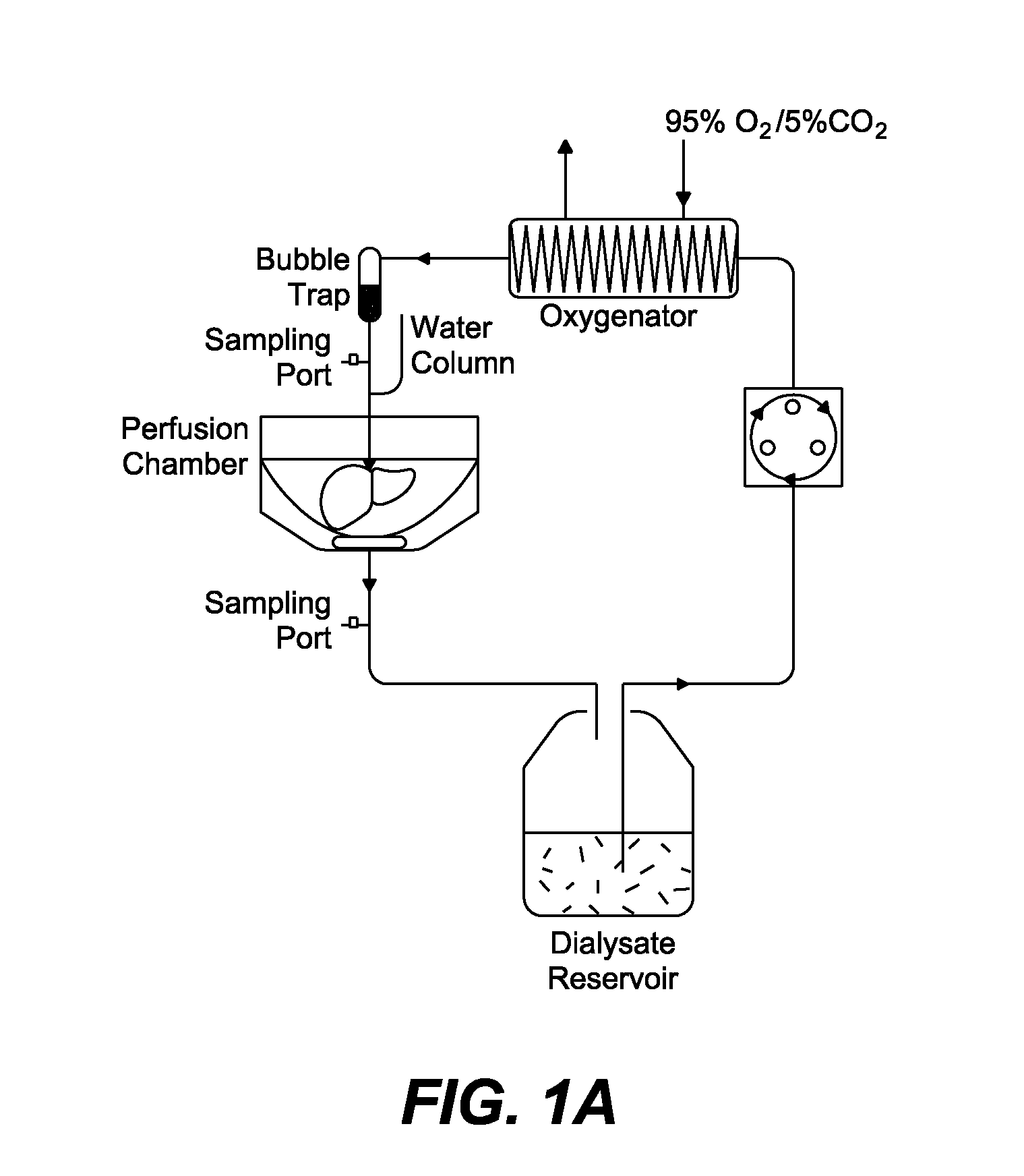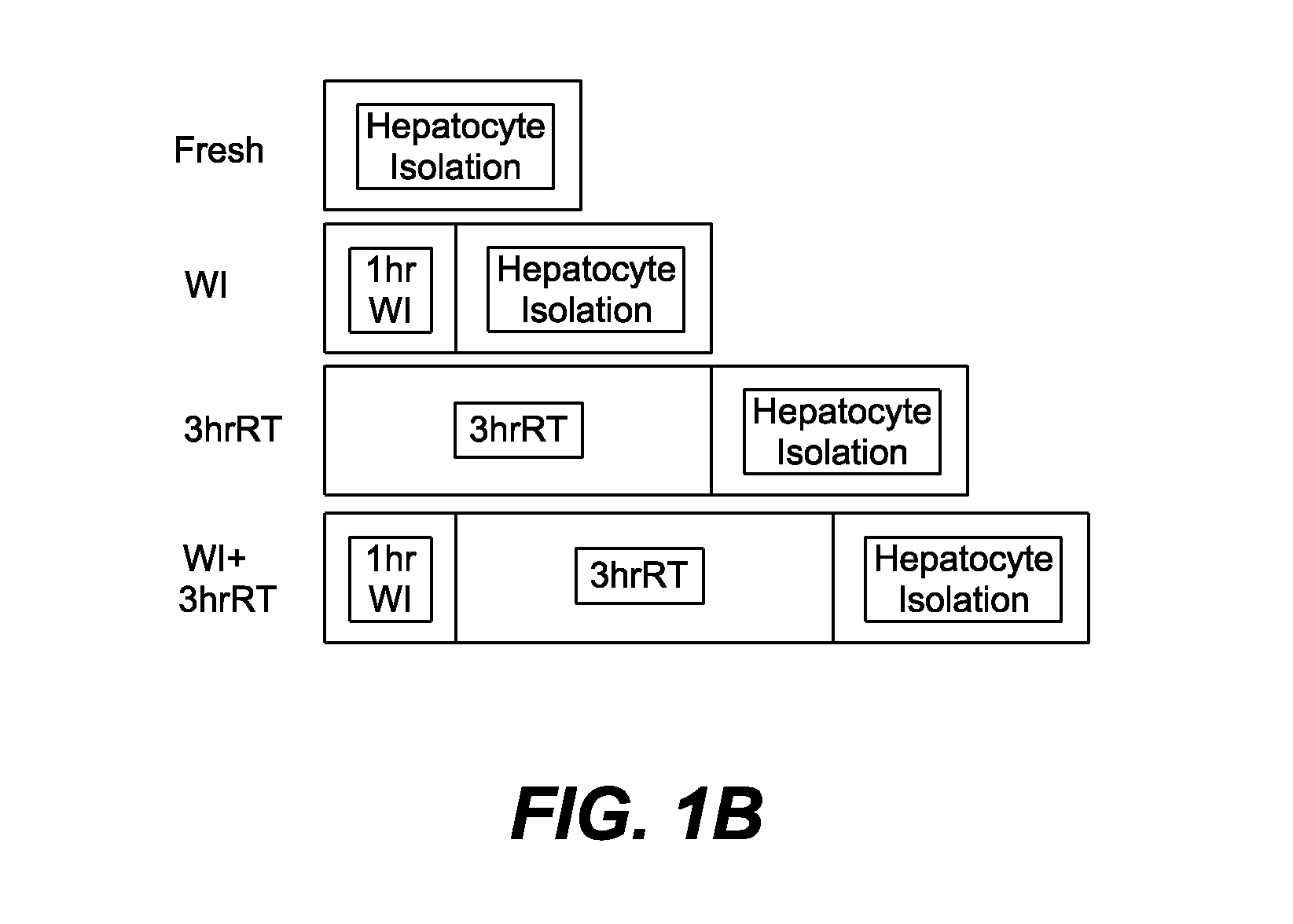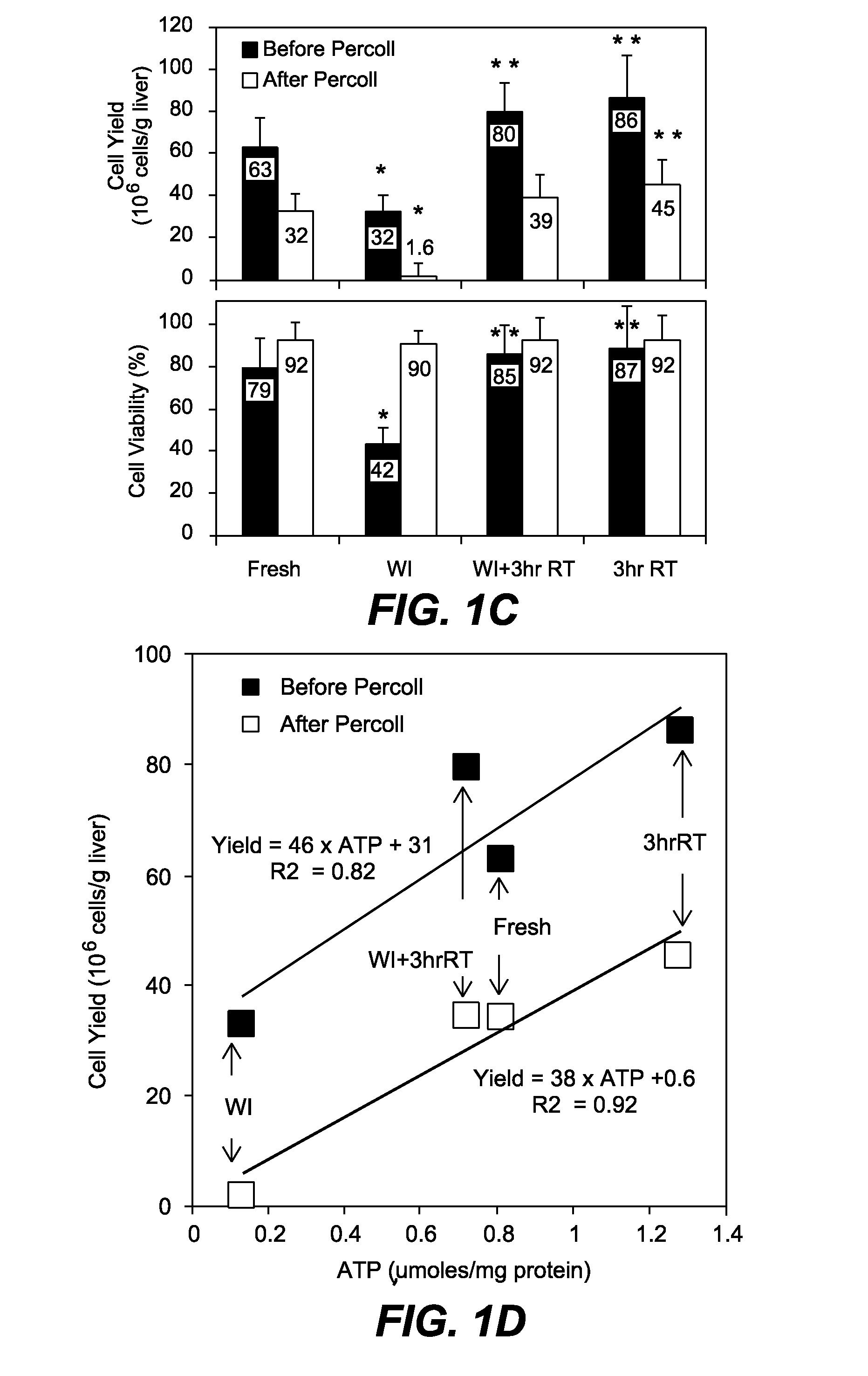Methods and compositions for preserving tissues and organs
a tissue and organ preservation technology, applied in the field of organ viability analysis, can solve the problems of lack of objective approach, fraction of available donor organs used in organ transplants, etc., and achieve the effects of prolonging or preserving the viability of an organ, preventing the damaging effects of ischemia, and reducing reperfusion and/or ischemic damag
- Summary
- Abstract
- Description
- Claims
- Application Information
AI Technical Summary
Benefits of technology
Problems solved by technology
Method used
Image
Examples
example 1
Materials and Methods for Example 1
[0341]Experimental Groups. Experiments were conducted on female Lewis rats (160 g-180 g) which were kept in accordance with National Research Council guidelines. The Subcommittee on Research Animal Care, Committee on Research, Massachusetts General Hospital approved the experimental protocols. Animals were randomly divided into four groups: 1) Livers that were exposed to an hour of warm ischemia at 34° C. (WI), 2) Livers that were perfused for 3 hours at room temperature after 1 hr WI (WI+3 hrRT), 3) Fresh livers (Fresh), and 4) Fresh livers perfused for 3 hours at room temperature (3 hrRT).
[0342]Hepatectomy.
[0343]Livers were excised according to the technique of Delrivibre et. al. (Delriviere, L., Gibbs, P., Kobayashi, E., Goto, S., Kamada, N., Gianello, P. Detailed modification technique for safer harvesting and preparation of liver graft in the rat. Microsurgery 17, 690-696 (1996). Briefly, a transverse abdominal incision was made and the intest...
example 2
Methods for Example 2
[0402]Burn Injury Protocol.
[0403]Male CD rats (Charles River Laboratories, Wilmington, Mass.) weighing 270-300 g (n≧5 for each group) were housed in a temperature—(25° C.) and light-controlled room (12-h light-dark cycle). The animals were cared for in accordance with the National Research Council guidelines. Experimental protocols were approved by the Subcommittee on Research Animal Care, Committee on Research, Massachusetts General Hospital. Water and rat chow were provided ad libitum. Animals were individually housed and allowed to adjust to their new surroundings for at least 2 days prior to inception of the experiment. On Day 0, rats were randomized into three groups and anesthetized with an intraperitoneal injection of ketamine (62.5 mg / kg of body weight) and xylazine (12.5 mg / kg of body weight). The dorsum of each rat was shaved with clippers, and those receiving a 40% total body surface area (TBSA) burn also had their abdomens shaved. The area to be burn...
example 3
MFA Comparison of Fresh and Warm Ischemic Livers in NELP
[0421]MFA is performed on Fresh and WI livers in perfusion to evaluate the overall performance of the organs in perfusion. The major differences between ischemic and fresh liver metabolism is noted, time to recovery is suggested, and methods of improving perfusion are discussed. In this example inventors examined the temporal profiles of 28 metabolites measured hourly during perfusion. These data provide information on the time frame of recovery of ischemically damaged organs, organ stability during perfusion, and the impact of perfusion on organ metabolism through comparison to in vivo values (Table 9).
[0422]Moreover, since the trends in metabolite uptake or production in all groups were generally linear (see Statistical Identification of Linear Response Phases During Perfusion in the Methods section of the selected time segments) it was possible to raise the steady state assumption for the fluxes hence enabling the use of MFA...
PUM
| Property | Measurement | Unit |
|---|---|---|
| Volume | aaaaa | aaaaa |
| Volume | aaaaa | aaaaa |
| Fraction | aaaaa | aaaaa |
Abstract
Description
Claims
Application Information
 Login to View More
Login to View More - R&D
- Intellectual Property
- Life Sciences
- Materials
- Tech Scout
- Unparalleled Data Quality
- Higher Quality Content
- 60% Fewer Hallucinations
Browse by: Latest US Patents, China's latest patents, Technical Efficacy Thesaurus, Application Domain, Technology Topic, Popular Technical Reports.
© 2025 PatSnap. All rights reserved.Legal|Privacy policy|Modern Slavery Act Transparency Statement|Sitemap|About US| Contact US: help@patsnap.com



